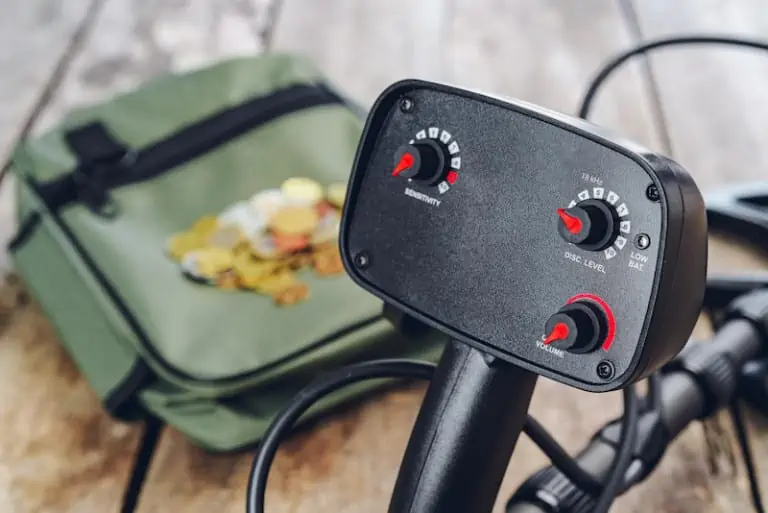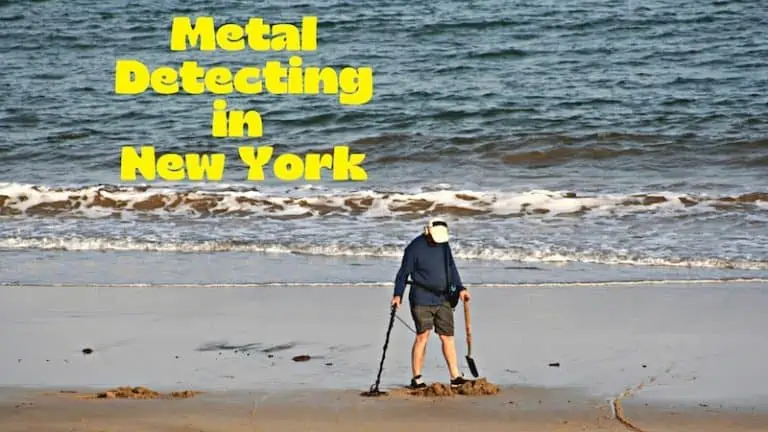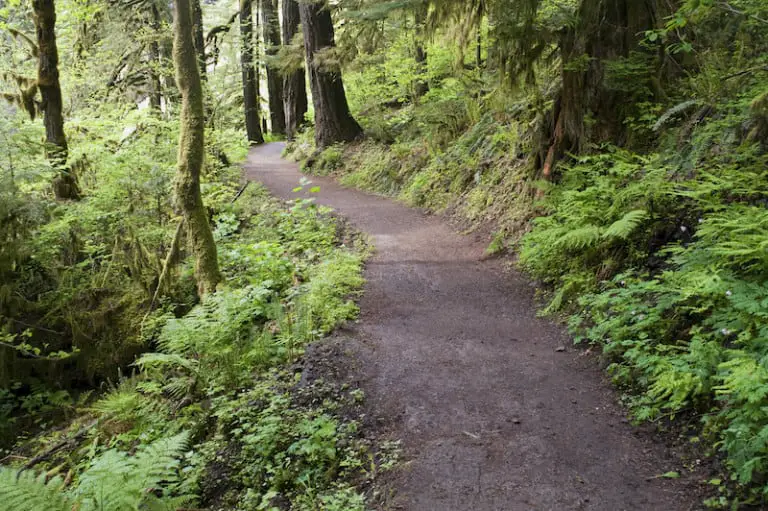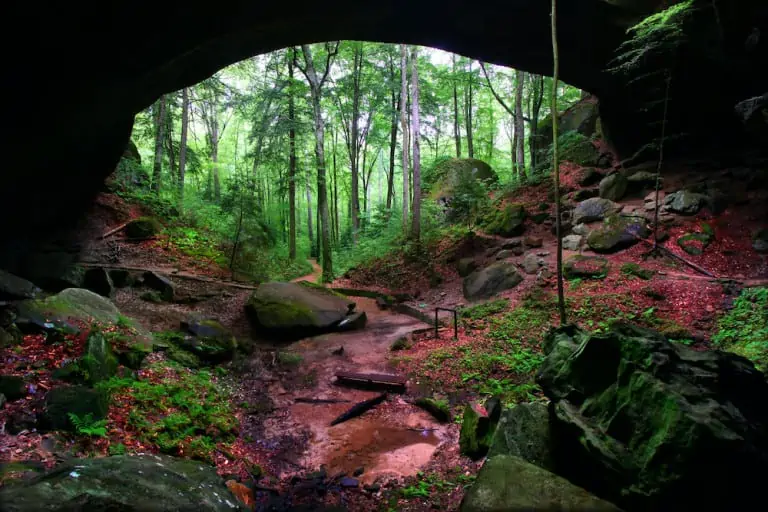Metal Detecting in Ohio: 50 Tips You Must Know
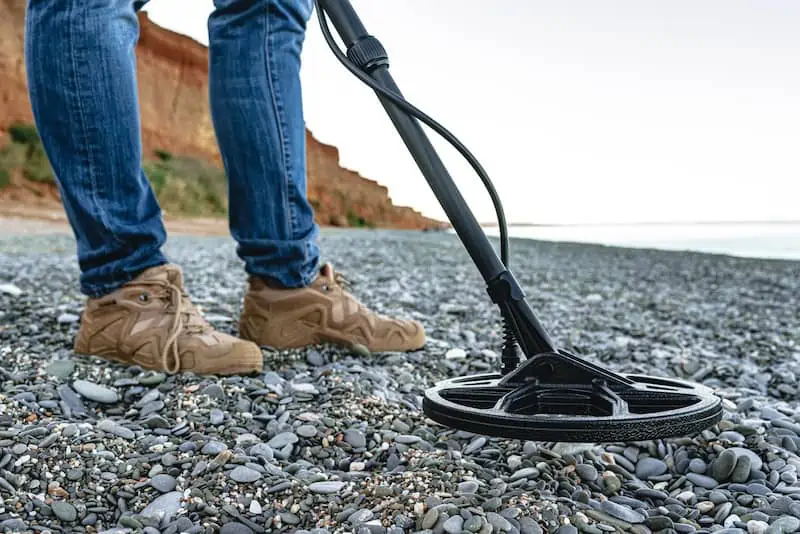
Ohio was first inhabited around 14,000 BCE by the Paleo-Indians. Later, it was inhabited by American and French fur trappers. Farmers and homesteaders also favored Ohio. These early residents left behinds artifacts that are still being discovered today.
The extensive history of Ohio makes it a great place to metal detect for artifacts. From the extensive beaches along Lake Erie to some of the most metal detectorist friendly city park systems in the country, metal detecting in Ohio is a wonderful hobby.
50 Tips for Metal Detecting in Ohio
1) Metal detecting on Ohio can be a rewarding experience. Here are 50 tips to make your metal detecting hunt great!
2) Expect to find trash. Lots of trash. Luckily, if you have a handy metal detector highly capable of using its discriminating features to filter out trash from potential treasure, you’ll be just fine. Don’t get discouraged.
3) Throw out any trash you find in the proper trash receptacles. Leave the area better than you found it.
4) Be courteous to others detecting near you. Try to avoid populated areas until off-peak times.
5) Do not harm any wildlife, plant life, geology, or structures while metal detecting.
6) Follow all laws, rules, and regulations when detecting in Ohio (or anywhere).
7) Detecting in OH is regulated by the Archaeological Resources Protection Act.
8) No man-made objects over 100 years old may be removed from the ground.
9) Almost all areas of state parks in Ohio have banned metal detecting.
10) Some state parks allow detecting on the beach areas.

11) National forest lands sometimes allow detectorists in certain locations.
12) To metal detect on private property, always receive written permission from the landowner.
13) Always check with the authorities in whatever city, county, state, or federal area you will be metal detecting to ensure you are within the law.
14) Metal detecting in Wayne National Forest is popular, but ensure you are in an area of the forest where metal detecting is permitted.
15) A few state parks, like Indian Lake and Alum Creek, allow metal detecting on their beaches. Ensure you have permission from park staff before metal detecting.
16) In Portage County, Aurora and Streetsboro allow metal detecting within city parks, but do have rules you must follow.
17) Some places, like Sidney in Shelby County, allow metal detecting but forbid digging within city parks.
18) Stark County, Trumbull County, Piqua County, Montgomery County, Medina County, Greene County, Fairfield County, Franklin County, Erie County, and Summit County do not allow metal detecting in their city parks.
19) Certain counties have different rules at different city parks for metal detecting.
20) Some cities and counties require a permit to metal detect, such as Cleveland Metroparks in Cuyahoga County.
21) While no significant gold has been found in Ohio, metal detectorists are still finding small bits of gold in Ohio creeks.
22) Large gold flakes were found in Richland County creeks during the late 1800s.
23) Multiple creeks within the state are known for having small amounts of gold.
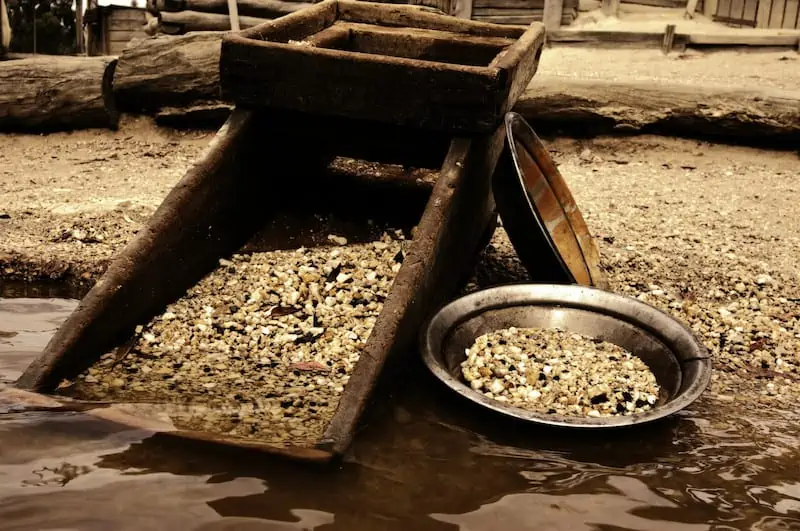
24) A hoard of silver coins was found on private property in Ohio in 2018. Private property is a great place to find hidden treasure, with the landowner’s written permission.
25) Consider joining a detecting club in Ohio.
26) Metal detecting clubs can have many benefits and can increase your success while metal detecting.
27) Ensure the area you are metal detecting allows digging. Some locations do not forbid metal detectors but do forbid digging of any kind.
28) Speaking of digging, ensure you have the proper metal detecting accessories and tools. I always recommend a good hand trowel to make digging plugs easier.
29) Take along a good handheld pinpointer. These can help narrow down your search area and make is easy to recheck holes you have already dug.
30) Make sure you know the soil conditions of the area you plan to detect.
31) There are 400 different kinds of soil in Ohio, so make sure you have the right metal detector for the job.
32) I would recommend a metal detector for all-terrains when detecting in Ohio.
33) If you plan to metal detect for gold, consider a detector that operates within the typical range for finding gold.
34) Consider the Minelab Equinox 800, the Garret AT Max or ATX, or the Nokta Makro Simplex+ for detecting.

35) Whatever metal detector you use, study the manual and test it at home to become more familiar with how it operates and how it reacts to different metals.
36) Native American artifacts are commonly found in Ohio.
37) Arrowheads and anything else made by Native tribes over 100 years ago must not be taken from state, federal, or public lands. You may hunt for these items on private property, however.
38) Look for old homestead sites throughout Ohio to find some interesting artifacts.
39) There are many tales of hidden treasures buried throughout Ohio.
40) On a bluff overlooking the Ohio River, a mile northeast of Crown City, legend states a riverboat occupied by pirates stashed over $20,000 in silver, gold, and jewelry. This bluff was known for pirate activity.
41) During the Revolutionary War, $25,000 in gold coins was said to have been buried a mile south of Minerva on the north shore of the Sandy River.
42) A flood destroyed large swaths of Dayton, Ohio in 1913. Many treasure hunters have been able to uncover items from this flood in and around Dayton.
43) Do some research before metal detecting. This will give you a clearer picture of where you can and cannot detect, what you can expect to find, and what areas give you the best chances to find loot.
44) Check with your local library for historical information about the area you want to detect.
45) Always be aware and alert while metal detecting.
46) Consider returning found items to the rightful owners, if possible (if there are etchings, markings, or other identifying markers on the item).
47) Always let the proper authorities know if you have found an item protected by the Archaeological Resources Protection Act.
48) Always fill all holes you have dug while metal detecting. I like to take along something to put my backfill material on (usually my dog’s rubber frisbee. Sounds silly, but it works well!). This makes it easier to fill holes and leave the area neat.
49) Get your kids, family, and friends out metal detecting with you! My kids have a great time metal detecting with me. When they find their own treasures, the excitement in their eyes is amazing!
50) Most importantly: HAVE FUN! Ensuring you keep your metal detecting fun will make detecting in Ohio, or anywhere, so much more enjoyable.
Metal Detecting Spots in Ohio
Let’s begin with the Wayne National Forest.
Wayne National Forest
With the proper permissions you may metal detect within Wayne National Forest. Relics from the areas past as a lumber site are commonly found.
Indian Lake State Park
While metal detecting is forbidden in most Ohio state parks, Indian Lake State Park has nice beach area. This area, called Oldfield Beach, can be metal detected with the proper permission from park staff.
Artifacts dating back to America’s earliest European explores have been found in this area. Treasure hunters frequently find lost jewelry in the sand. Most items found are under 100 years old, so you can legally keep them.
Alum Creek State Park
Again, metal detecting throughout most of the Alum Creek state park is forbidden, but along the Alum Creek Beach is allowed, with proper permissions. Some relics found along this patch of beach are almost 2000 years old (you will not legally be able to keep something that old, however). Alum Creek Beach was also a crucial site for the Underground Railroad. Buttons and other misplaced artifacts have been found in the area.
City of Aurora
The city of Aurora has been producing metal detecting finds for decades. Many relics have been found on private property in the city, but there is plenty of public land in Aurora for treasure hunters to search. Aurora is home to 10 city parks that are open to metal detecting. Be aware that the city has its own laws regarding metal detecting.
If you find a modern item, that seems clean and could be newly lost by someone, you are expected to make efforts to return it to its rightful owner. You are also asked to keep all metal detecting activities relegated to unpopulated areas of the park. Wait for off-peak hours if you wish to metal detect in populated areas.
City of Hilliard
Hilliard is a city in Franklin County. It has 12 city parks covering thousands of acres. Each Park has produced noteworthy treasures, some dating back to pre-Colonial times. The most popular parks to metal detect in Hilliard are Homestead Metro Park, Roger A Reynolds Municipal Park, and Hilliard Station Park. Ensure you seek all proper permission to metal detect in Hilliard city limits and its city parks.
National Trail Parks and Recreation District
The National Trail Parks and Recreation District is a collection of 24 city parks in Springfield, Ohio. The CEO of the National Trail Parks and Recreation District stated that metal detecting equipment can be used in open park areas, but the turf must be returned to its original conditions.
Basically, back fill all your holes and don’t leave the park looking like Swiss cheese. You may not metal detect on athletic areas, any fenced areas, pool, or stadiums, or while any event is going on within the park.
Private Property
Always ensure you have written permission from landowners to metal detect on private property. Private property is a fantastic place to find buried treasures with a metal detector, in part because since the property is not available to the public, a lot of the treasure has remain untouched in the ground.
So, while it’s a great opportunity to find some unique gems, always make sure you have proper permission before you go digging.
Metal Detecting Clubs in Ohio
As with all states, Ohio is home to many metal detecting clubs. Metal detecting clubs have multiple benefits. You can learn from other detectors about the art of metal detecting. You can learn about different metal detectors.
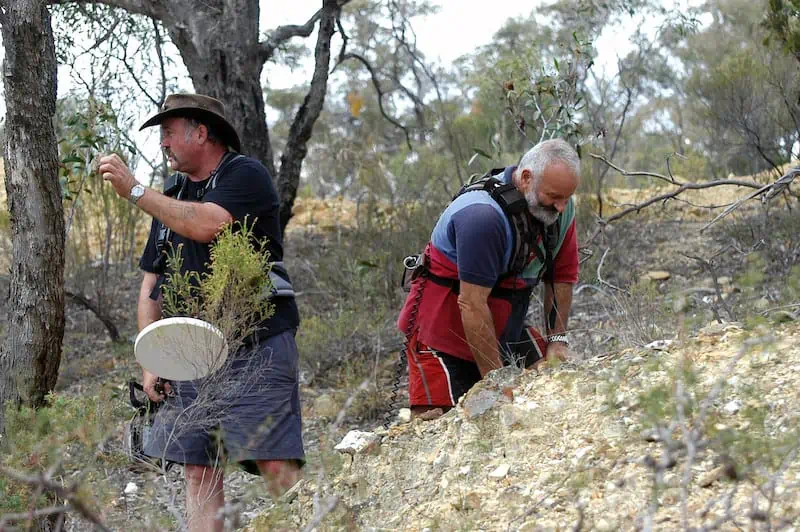
You can get tips and tricks for detecting in Ohio. You can share your finds and get help identifying them. It is nice, too, to gather with a group of likeminded people and share your hobby.
Some metal detecting clubs in Ohio are:
- Black Swamp Metal Detecting Club
- Butler County Silver Diggers
- Cincinnati Dry Dredgers
- Dayton Diggers
- North Coast Fossil Club
- North Coast Historical Recovery Association
- Ohio Detectorist Association
- Ohio Metal Detecting
- The Federation of Historical Bottle Collectors
- Tri-County Metal Detecting Club
- Tri-State Historical Research and Recovery Association
Metal Detecting in Ohio Creeks
Ohio has many creeks that are great for metal detecting. Gold has been found in several creeks in the state, although it is not in huge amounts. Commercial gold mining was set up in many different areas during the 1800s and 1900s, all of which ended in financial failure as the gold was not sufficient for commercial operations.
An area north of Bellevue in Richland County in the late 1800s was known for large gold flakes near the Clearfork River. The area was overwhelmed by prospectors, however, and the amount of gold found has dwindled. There are several other creeks known to have gold in them including Honey Creek, Friends Creek, and Leatherwood Creek. Placer gold has been found in Stonelick Creek, and prospectors report gold in Ross County creeks.
Some other creeks to metal detect for gold are Big Darby Creek, Big Walnut Creek, Killbuck Creek, Paint Creek, Racoon Creek, and Ohio Brush Creek. Like many states in the region, Ohio’s gold is the result of glacial movement during the last ice age.
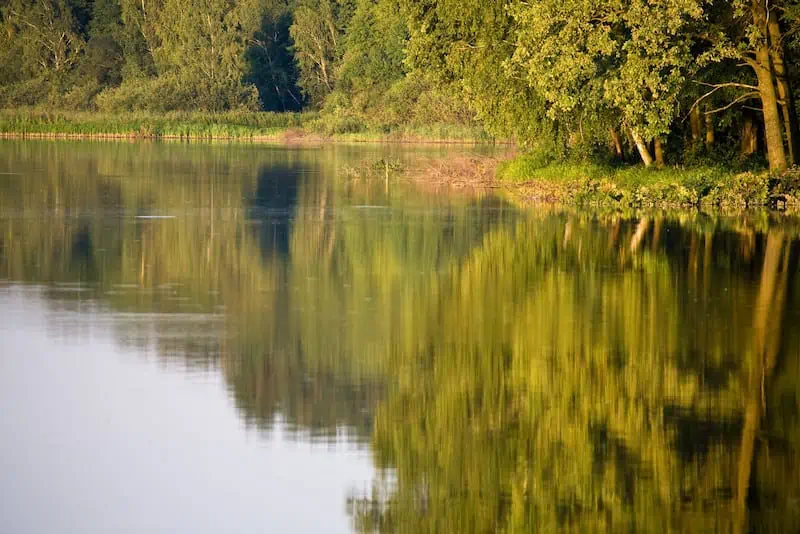
Metal Detecting Laws in Ohio
As with all states, Ohio metal detecting is regulated by the Archaeological Resources Protection Act. This law is meant to preserve ancient history and disallows anyone from digging man-made objects over 100 years old on public grounds. The Act does not apply to those metal detecting on private property, so long as you have written permission from the landowner.
Metal detecting in state parks in Ohio is almost strictly forbidden. There are some exceptions, such as sandy beach areas. But you will still need written permission from park authorities. Activities must remain on beach land only, and if you find an object believed be fall under the Archaeological Resources Protection Act, park staff must immediately be notified.
A lot of National Forest land in the country is open to metal detectors. In Ohio, metal detecting is allowed in some developed campgrounds and picnic areas, not specifically closed to such activities. If archaeological remains are known to exist, a sign stating metal detecting is not allowed would be posted.
Archaeological remains, both known and unknown to the state and federal government, are protected by law. As an example, Wayne National Forest states metal detectors are not allowed to be used to find coins and artifacts. Despite this, it is one of the most popular metal detecting destinations in the state.
To metal detect on private property, always remember to obtain written permission from the landowner. It must be written permission to protect you. To metal detect within city parks, check with the city and county, as well as the parks and recreation department to determine the rules for metal detecting.
You should always check with the entities in charge of whatever area you plan to metal detect to ensure you stay within the law. As well as federal laws, there are state, county, and city level laws in many locations.
Happy Hunting!
FAQ
Q: Can I metal detect in Ohio State parks?
A: Metal detecting is all but forbidden in Ohio state parks, apart from some beach areas. Ohio has a long history, and the Archaeological Resources Protection Act is in place to ensure historical artifacts are not damaged or stolen. To ensure you operate within the law, call the park staff of whichever state park you would like to visit, and ask about their rules and regulations for metal detecting.
Q: Can I find gold in Ohio?
A: While some gold has been discovered in Ohio, don’t go in expecting to strike it rich while prospecting. No large-scale gold has been found in the state, although some creeks are known to have small bits of gold in them. You can find small amounts of gold in these creeks.
Q: What types of finds can I expect to find in Ohio?
A: Metal detectorists have found dozens of types of treasures throughout the state. Silver coin hoards, old relics, new and old coins, Native American artifacts, European settlers’ relics, small amounts of gold, and even buttons linked to the Underground Railroad have all been found in Ohio.
If you enjoyed this article on metal detecting in Georgia, please “like” our Facebook page and be sure to revisit Discover Detecting for new content surrounding the metal detecting hobby!
You Might Also Want to Read:
